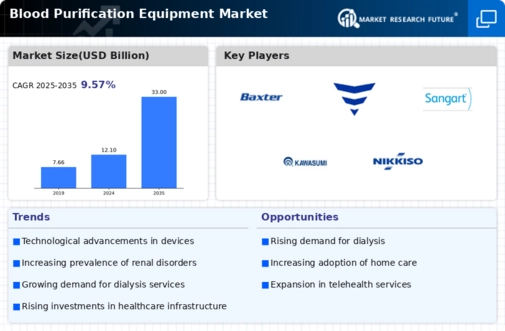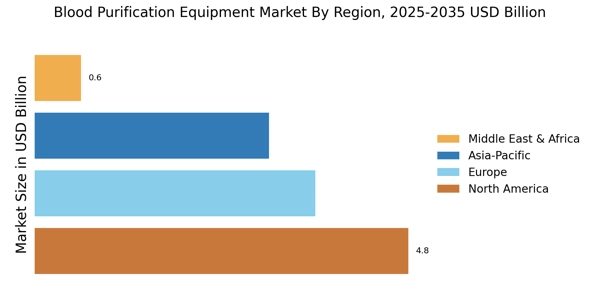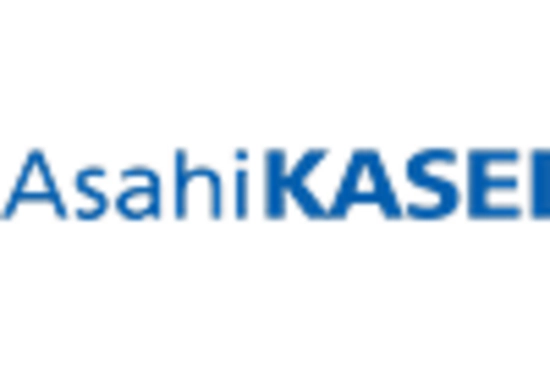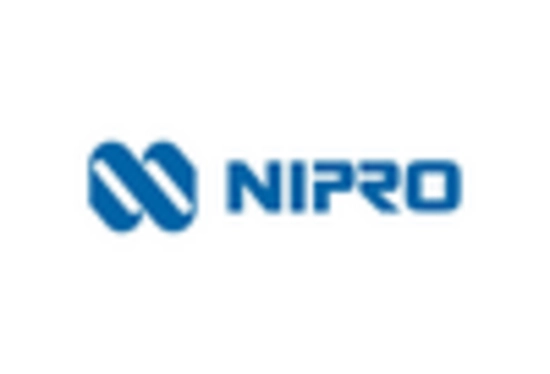Rising Healthcare Expenditure
The Blood Purification Equipment Market is benefiting from the rising healthcare expenditure observed in various regions. Increased investment in healthcare infrastructure and technology is facilitating the adoption of advanced blood purification solutions. Governments and private sectors are allocating more resources to improve healthcare services, which includes the procurement of state-of-the-art blood purification equipment. This trend is particularly evident in developing regions, where healthcare systems are evolving to meet the needs of their populations. As healthcare expenditure continues to rise, the Blood Purification Equipment Market is expected to experience robust growth, driven by the demand for innovative and effective treatment options.
Increasing Geriatric Population
The Blood Purification Equipment Market is also being propelled by the increasing geriatric population, which is more susceptible to chronic diseases requiring blood purification. As the global population ages, the demand for effective treatment options for age-related health issues, including kidney dysfunction, is expected to rise. Older adults often have multiple comorbidities, necessitating advanced blood purification technologies to manage their health effectively. This demographic shift is prompting healthcare systems to invest in more sophisticated blood purification equipment to cater to the needs of elderly patients. Consequently, the Blood Purification Equipment Market is likely to expand as it adapts to the growing requirements of an aging population.
Rising Chronic Disease Prevalence
The Blood Purification Equipment Market is significantly influenced by the rising prevalence of chronic diseases, particularly renal disorders. According to recent data, the incidence of chronic kidney disease is on the rise, with millions affected worldwide. This trend necessitates the need for effective blood purification solutions, as patients increasingly require dialysis and other purification methods. The growing awareness of the importance of early diagnosis and treatment is also contributing to market expansion. Healthcare providers are investing in advanced blood purification technologies to meet the increasing demand for effective treatment options. Consequently, the Blood Purification Equipment Market is poised for growth as it adapts to the needs of a population grappling with chronic health issues.
Regulatory Influence on Blood Purification Equipment
Regulatory frameworks play a crucial role in shaping the Blood Purification Equipment Market. Stringent regulations ensure that equipment meets safety and efficacy standards, which can drive innovation and quality improvements. Regulatory bodies are increasingly focusing on the approval processes for new technologies, which can either expedite or delay market entry. Compliance with these regulations is essential for manufacturers aiming to establish a foothold in the market. Moreover, the introduction of new guidelines regarding the use of blood purification technologies is likely to influence product development and marketing strategies. As a result, the Blood Purification Equipment Market must navigate these regulatory landscapes to thrive and meet the evolving needs of healthcare providers and patients.
Technological Advancements in Blood Purification Equipment
The Blood Purification Equipment Market is experiencing a surge in technological advancements that enhance the efficacy and efficiency of treatment modalities. Innovations such as high-flux dialyzers and portable dialysis machines are becoming increasingly prevalent. These advancements not only improve patient outcomes but also expand the accessibility of treatment options. For instance, the introduction of automated systems for monitoring and adjusting treatment parameters has streamlined procedures, potentially reducing the burden on healthcare professionals. Furthermore, the integration of artificial intelligence in blood purification processes is anticipated to optimize treatment protocols, thereby increasing patient safety and satisfaction. As a result, the Blood Purification Equipment Market is likely to witness substantial growth driven by these technological innovations.


















Leave a Comment